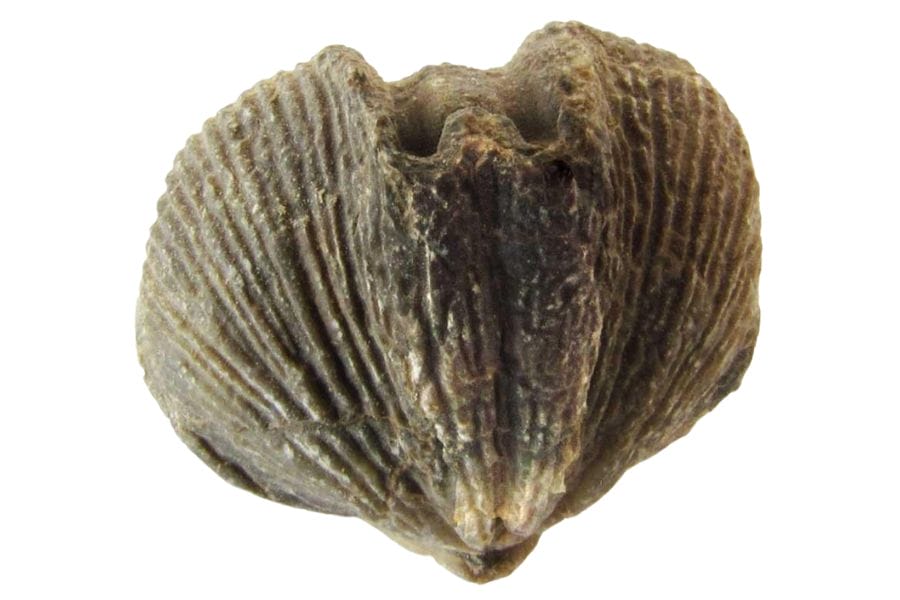Iowa is a fantastic spot for anyone interested in discovering a piece of Earth’s history. This state hides some amazing secrets beneath its soil.
Many Iowa fossils offer a peek into life from millions of years ago. One can find crinoids and brachiopods, which are like the ocean’s old-timey plants and shells. These fossils paint a vivid picture of the creatures that once thrived in the area.
Whether you’re a seasoned fossil hunter or just starting out, Iowa’s landscapes are ripe with opportunities to uncover clues from the past.
The Fossils Of Iowa You Can Find
Many of the fossils that can be found in Iowa come from marine creatures, a nod to a time when vast seas covered the region.
Along with marine fossils, plant fossils also pepper the state’s terrain. These discoveries provide a snapshot of the diverse ecosystems that once thrived here.
For those excited about more than just fossils, rockhounding in Iowa is a thrilling adventure! There’s a handy guide that can point explorers to places where they can find different rocks, minerals, and gems scattered across the state.
- The extensive local experience and understanding of our team
- Input from multiple local fossil hunters and fossil groups
- The accessibility of the various locations
- Safety and potential hazards when collecting
- Private and public locations
- A desire to include locations for both experienced fossil lovers and those who are just starting out
Using these weights we think we’ve put together the best list out there for those who love finding great new fossils for our collections!
Common Iowa Fossils
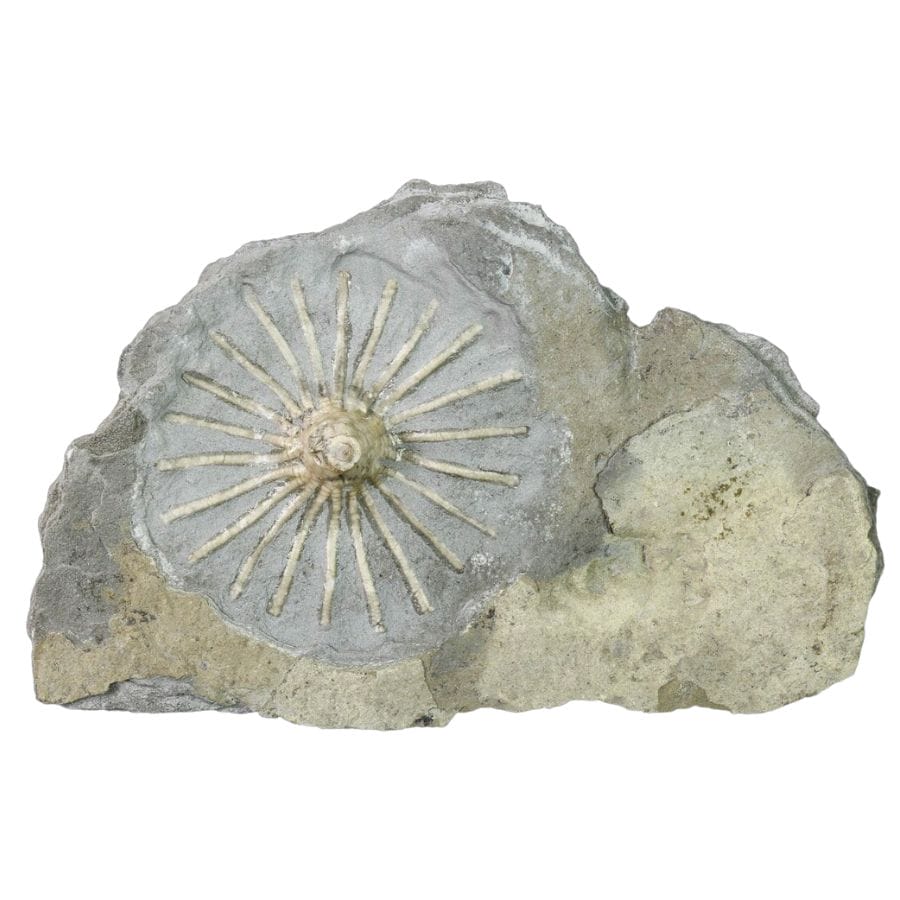
Below is a list showcasing some of the common fossils you might come across in Iowa. Several areas across the state have these fossils in abundance:
- Crinoids
- Trilobites
- Brachiopods
- Mollusks
- Pelecypods
- Corals
- Gastropods
- Fish bones
- Bryozoa
- Stromatoporoids
- Cephalopods
- Graptolites
Rare Iowa Fossils
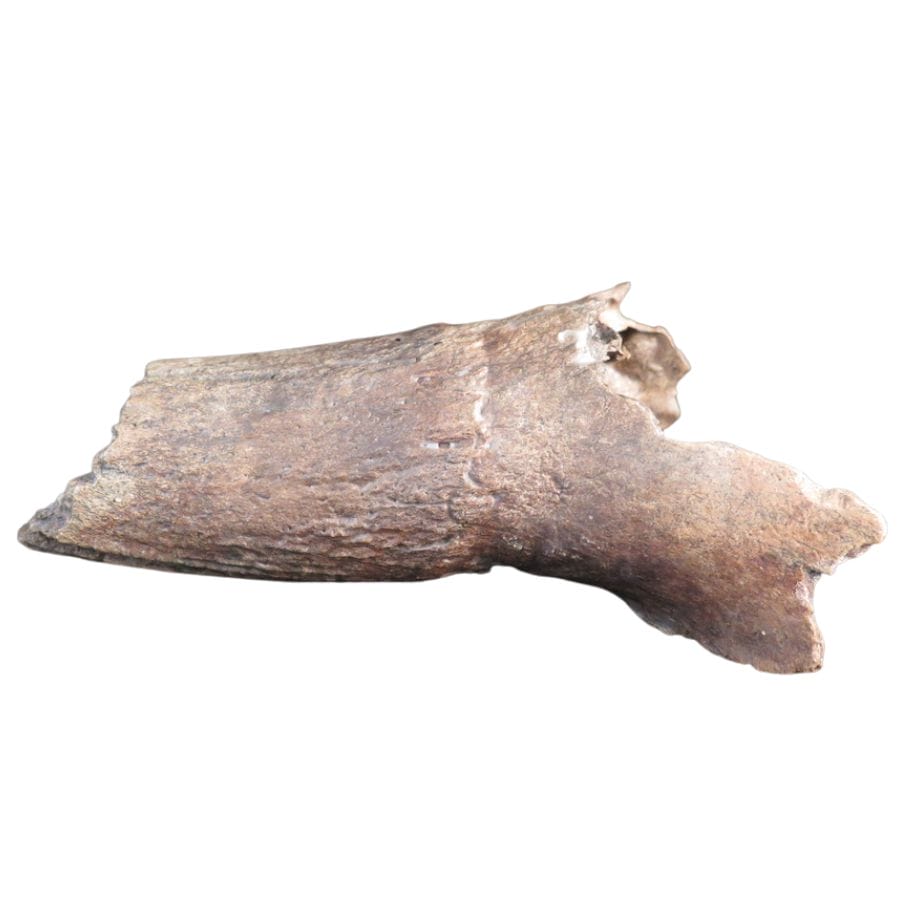
Iowa’s ground holds more than just common finds; it’s home to some special surprises too! Among the treasures hidden beneath the soil are valuable rare Iowa fossils:
- Mammal bones
- Shark bones
The Best Places To Find Fossils In Iowa
Those eager to connect with the past can explore several spots in Iowa known for their fossils. Each location offers a chance to discover pieces of Earth’s history tucked away for millions of years.
Always Confirm Access and Collection Rules!
Before heading out to any of the locations on our list you need to confirm access requirements and collection rules for both public and private locations directly with the location. We haven’t personally verified every location and the access requirements and collection rules often change without notice.
Many of the locations we mention will not allow collecting but are still great places for those who love to find beautiful rocks and minerals in the wild without keeping them. We also can’t guarantee you will find anything in these locations since they are constantly changing.
Always get updated information directly from the source ahead of time to ensure responsible rockhounding. If you want even more current options it’s always a good idea to contact local rock and mineral clubs and groups
Fossil and Prairie Park Preserve
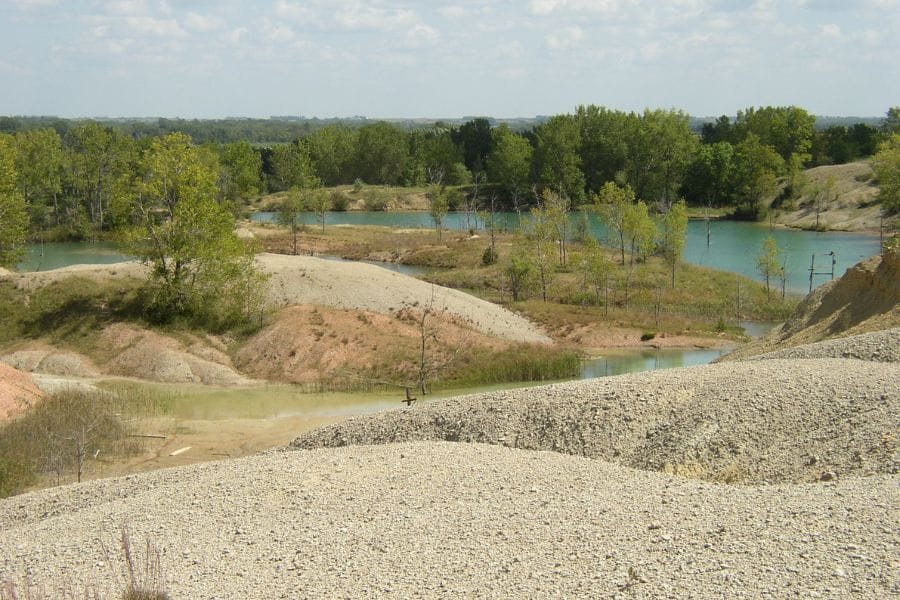
The Fossil and Prairie Park Reserve sits on land that was once a thriving ocean floor. This area is special because it’s one of the few places where visitors can collect their own fossils.
The terrain is diverse, featuring rock beds that have been exposed by the elements over time. As people explore, they walk on layers of rock formed millions of years ago.
However, the marine fossils of Iowa aren’t the only things you can find in this location. The surrounding prairie landscape is home to colorful wildflowers and buzzing insects during warmer months.
Below the surface, the geology showcases rich limestone deposits, which are remnants from the sea that once dominated the landscape.
The mix of prairie and fossil-rich rock beds makes this center a unique spot for both nature lovers and rock enthusiasts.
Where to find fossils in the Fossil and Prairie Center
Visitors can find fossils like crinoids, brachiopods, and coral. These fossils are nestled within the exposed rock beds that you’ll find around the area.
If you want REAL results finding incredible rocks and minerals you need one of these 👇👇👇
Finding the coolest rocks in isn’t luck, it's knowing what to look for. Thousands of your fellow rock hunters are already carrying Rock Chasing field guides. Maybe it's time you joined the community.
Lightweight, mud-proof, and packed with clear photos, it’s become the go-to tool for anyone interested discovering what’s hidden under our red dirt and what they've already found.
Join them, and make your next rockhounding trip actually pay off.
What makes it different:
- 📍 Find and identify 140 incredible crystals, rocks, gemstones, minerals, and geodes across the USA
- 🚙 Field-tested across America's rivers, ranchlands, mountains, and roadcuts
- 📘 Heavy duty laminated pages resist dust, sweat, and water
- 🧠 Zero fluff — just clear visuals and straight-to-the-point info
- ⭐ Rated 4.8★ by real collectors who actually use it in the field
Devonian Fossil Gorge
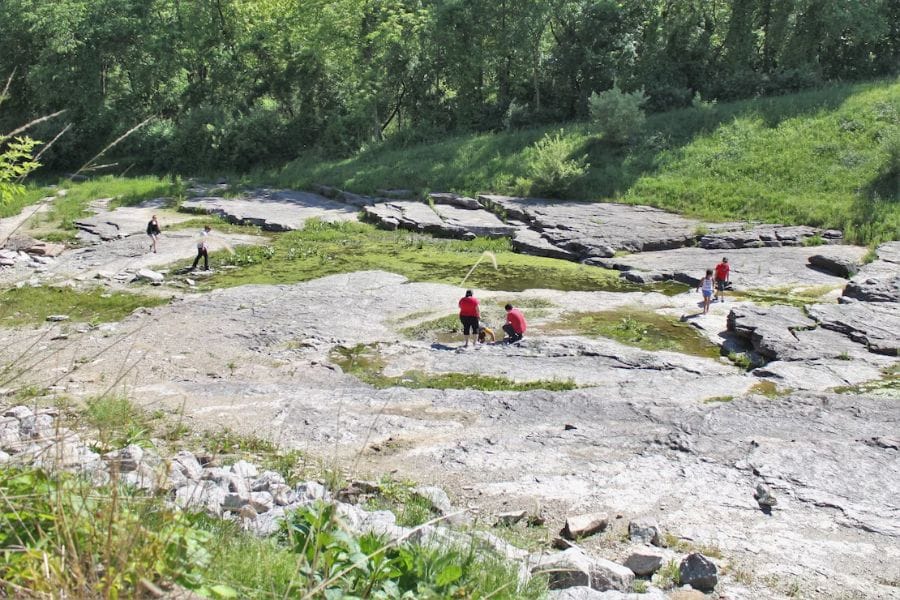
The Devonian Fossil Gorge offers a unique journey through time, with exposed bedrock that reveals various fossils.
A significant flood event washed away layers of soil and debris, uncovering a vast “fossil floor” for everyone to see. This area showcases limestone bedrock, which formed from an old ocean’s sediment.
As a result, visitors can find a variety of marine fossils in Iowa, from crinoids to brachiopods.
This location is not only a testament to the power of nature to change and mold the landscape, but also a reminder of the diverse marine life that once thrived here.
Where to find fossils in the Devonian Fossil Gorge
Within the exposed limestone bedrock at the Devonian Fossil Gorge, visitors can find marine fossils. As you explore the gorge, you’ll often discover these fossils embedded in the flat “fossil floor” surfaces.
Winneshiek County
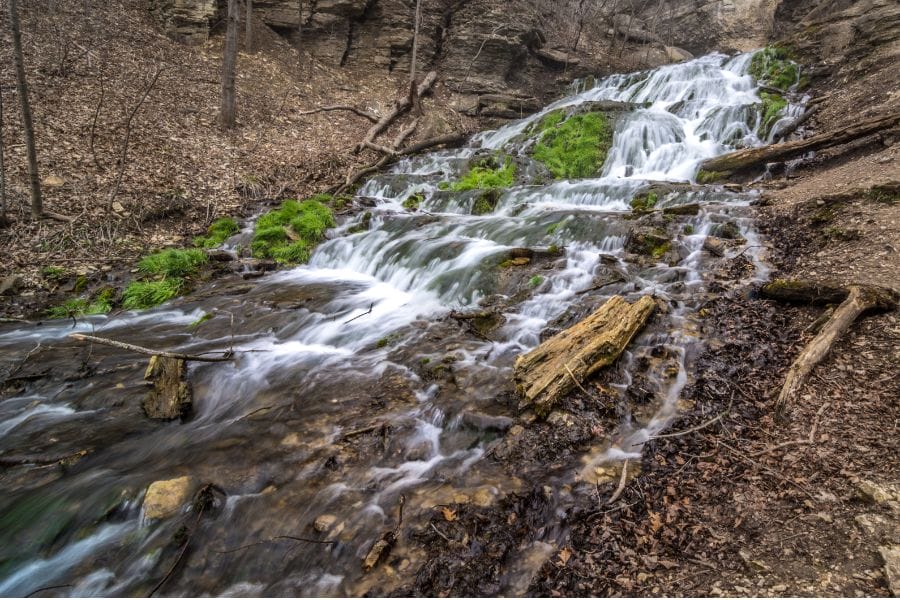
Winneshiek County boasts a diverse landscape that captivates both nature lovers and rock enthusiasts.
Nestled in a region of rolling hills and fertile valleys, it’s cradled by the meandering Upper Iowa River, which has carved its path over the ages.
The county’s terrain varies from lush grasslands to rocky outcrops, with layers of sedimentary rock peeking through in places.
The geology includes shale, limestone, and sandstone formations waiting to be explored. Among these layers, enthusiasts often uncover marine fossils. This makes Winneshiek County a notable destination for fossil hunting in Iowa.
Where to find fossils in Winneshiek County
Among the sedimentary rock layers in Winneshiek County, you can find fossils like brachiopods, trilobites, and crinoids. These fossils are often discovered in the shale and limestone formations of the region.
You can also uncover these fossils as you roam the rocky outcrops and riverbeds.
Johnson County

Johnson County is nestled in the eastern part of the state, boasting a mix of flat plains and rolling hills. This diverse terrain is shaped by the flow of the Iowa River, which meanders through, carving out valleys and shaping landscapes.
Geologically speaking, the county has layers of sedimentary rocks, which tell stories of times when seas covered the area. In these rock layers, enthusiasts might find common Iowa fossils such as crinoids and brachiopods.
The soil also provides a peek into past glacial movements, with deposits left behind from melting glaciers. Streams and riverbanks in the county offer excellent spots for rock and mineral enthusiasts to explore and discover the area’s geologic history.
Where to find fossils in Johnson County
In Johnson County, the sedimentary rock layers hold fascinating fossils that provide glimpses into prehistoric marine life.
The banks of the Iowa River and its tributaries are good spots to start looking. Here, erosion often uncovers these hidden relics, making them accessible for curious rockhounds.
Le Grand
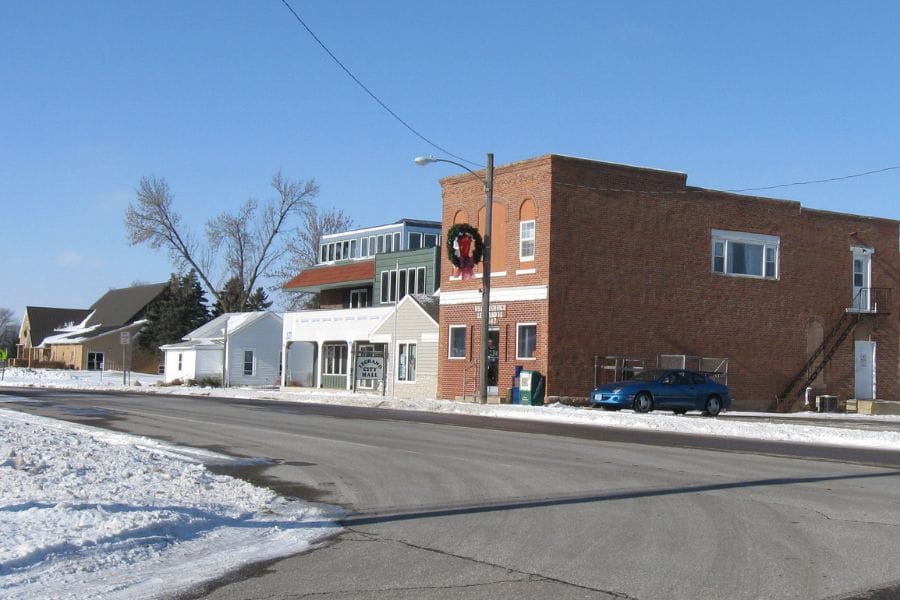
Surrounded by rolling landscapes, Le Grand stands out due to its intriguing sedimentary rock formations, predominantly limestone. These rock layers have taken millions of years to form, each capturing a slice of Earth’s dynamic history.
As you explore the terrain, you’ll see its mix of grassy expanses and rock exposures. These formations not only make the terrain interesting but also hold numerous secrets about past environments.
Among these secrets are fossils in Iowa, including brachiopods, crinoids, and trilobites.
Overall, Le Grand offers a unique blend of nature and geology, making it a captivating destination for anyone keen to uncover the stories hidden within the Earth.
Where to find fossils in Le Grand
Limestone formations offer clues to life from bygone eras. These fossils frequently emerge from rock outcrops and exposed sections throughout the terrain. You’ll also see these fossils near water sources and hilly areas.
Other Top Places To Find Iowa Fossils By Region
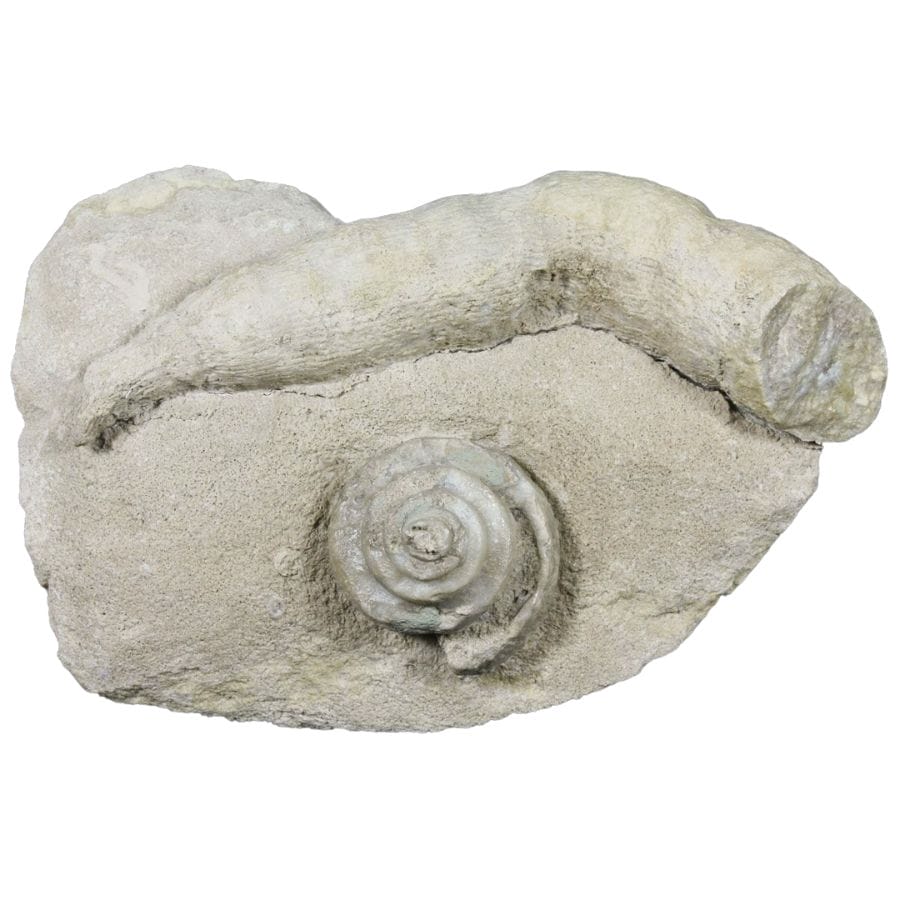
From limestone outcrops to shale beds, Iowa offers numerous spots where fossils can be found. Let’s explore these exciting locations.
| Location | Fossils |
| Regional North Central Iowa exposures | Stromatoporoids |
| Crescent, Adair County | Fish bones |
| Greenfield, Adair County | Agassizodus |
| Lansing, Allamakee County | Saratogia, Dikelocephalus, Illaenurus |
| Eldorado, Benton County | Trilobites |
| Waterloo, Black Hawk County | Crinoids, Arthrodire fish, Rhynchodus, Ptychodus |
| Madrid, Boone County | Mollusks, Dunbarella, Edestid shark spines, Listracanthus |
| Waverly, Bremer County | Ptyctodus, Rhynchodus |
| Littleton, Buchanan County | Hexagonaria, cephalopods, favosites, Cryptophyllum, brachiopods, crinoids, bryozoa |
| Lewis, Cass County | Fusulinids, shark teeth, brachiopods, bryozoa |
| Clarence, Cedar County | Trilobites |
| Bird Hill, Cerro Gordo County | Corals, brachiopods, stromatoporoids |
| Clinton, Clinton County | Graptolites, trilobites |
| Boyer, Crawford County | Mollusks, gastropods and, bivalves |
| Redfield, Dallas County | Xiphosura |
| Elgin, Davis County | Trilobites, ammonites |
| Manchester, Delaware County | Graptolites, trilobites |
| Burlington, Des Moines County | Crinoids, Agaricocrinites, sponges, crinoids, brachiopods, pelecypods, cephalopods, crustacea, fish, worms, bryozoa, corals, plants |
| Graf, Dubuque County | Calymene, Lingula, Orthoceras, Leptobolus, nautiloids, cephalopods |
| Pleasant Valley Township, Fayette County | Cornulites, Hebertella, Plectambonites, Leptaena, Calymene, crinoids |
| Nora Springs, Floyd County | Corals, edrioasteroids, cystoids |
| Rockford, Floyd County | Pelecypods, brachiopods, cephalopods, corals, gastropods, crinoids, stromatoporoids |
| Geneva Township, Franklin County | Schellwienella, Productus, Camarotoechia, Spirifer, Cleiothyridina, fish spines |
| Ross Township, Franklin County | Corals, blastoids, brachiopods, bryozoa, gastropods, pelecypods |
| Bartlett, Fremont County | Agassizodus |
| Conrad, Grundy County | Zaphrentis, Schellwienella, Camarotoechia, Rhipidomella, Dielasma, Spirifer, Conocardium, Straparollus, Loxonema |
| Stewart, Guthrie County | Petrodus |
| Iowa Falls, Hardin County | Zaphrentis, Orophocrinus, Platycrinus, Schellwienella, Rhipidomella, Spirifer, Reticularia, Aviculopecten, Bellerophon, Igoceras, Loxonema, Straparollus |
| Mount Pleasant, Henry County | Fish teeth |
| Oakland Mills, Henry County | Shark teeth, Deltodus |
| Humboldt, Humboldt County | Mollusks, brachiopods, ostracods |
| Monmouth, Jackson County | Gastropods |
| Kellogg, Jasper County | Shark spines, fish fins |
| Round Prairie Township, Jefferson County | Protozoa, corals, Archeocidaris spines and plates, crinoids, Vermes, bryozoa, Fenestella, brachiopods, pelecypods, Arthropods, fish bones |
| Ollie, Keokuk County | Griffithides |
| South English, Keokuk County | Bradyodont shark teeth |
| Belfast, Lee County | Lithostrotion, Syringopora, Lithostrotion, Conularia, Orbiculoidea, Girtyella, Spirifer, Myalina, Aviculopecten, Modiomorpha, Conocardium, Bellerophon |
| Denmark, Lee County | Orthothetes, Spirifer, Conularia, Cleiothyridina, Reticularia, Tetracamera, Pustula, Productus |
| Linwood, Linn County | Porifera, mollusks, crinoids, Onychocrinus, brachiopods, Spinocyrtia, Gypidula, Composita, Merista, Fascifera, Hebertella |
| Elrick Junction, Louisa County | Helodus teeth, Chonopectus, Athyris, Chonetes, Edmondia, Spirifer, Paryphorhynchus, Orthothetes, mollusks |
| Smith Creek, Louisa County | Fish, sponges, crinoids, brachiopods, pelecypods, gastropods, Gomphoceras, cephalopods, crustacea, worms, bryozoa, corals, plants |
| Winterset, Madison County | Pelecypods, Deltodus, Sandalodus, Myalina, Orthothetes, Chonetes, Composita, crinoids |
| New Sharon, Mahaska County | Brachiopods, corals, bivalves |
| Pella, Marion County | Corals, blastoids, brachiopods, pelecypods, trilobites |
| Wyoming Hill, Muscatine County | Lepidophyllum, Lepidodendron, Annularia, Calamostachys, Alethopteris, Trigonocarpus |
| Norwich, Page County | Phillipsia |
| Emmetsburg, Palo Alto County | Petrified wood |
| Cherokee, Plymouth County | Elephas teeth and bones |
| LeMars, Plymouth County | Elephant, deer, horse |
| Pierson Creek Valley, Plymouth County | Bison, elephants, horses, gastropods |
| Gilmore City, Pocahontas County | Crinoids, brachiopods, crinoids, bryozoa, corals, edrioasteroids |
| Des Moines, Polk County | Trilobites |
| Grinnell, Poweshiek County | Vertebrates, brachiopods |
| Davenport, Scott County | Brachiopods, Proteus |
| Indian Village Township, Tama County | Chonetes, Productus, Rhynchonella, Spirifer, crinoids, fish remains, Orthothetes, Spirifer, Straparollus, Zaphrentis |
| Ottumwa, Wapello County | Corals, crinoids, bryozoa, brachiopods, pelecypods |
| Maple Mill, Washington County | Brachiopods, pelecypods, Dentalium, Bellerophon, gastropods, Orthoceras |
| Sioux City, Woodbury County | Inoceramus, fish scales, foraminifers, fish teeth and spines, pelecypod, Turritella, Margarita, Cardium, Corbicula, Mactra, Protocardia, Trigonarca, leaf fragments, cones |
Common Questions About Fossil Hunting In Iowa
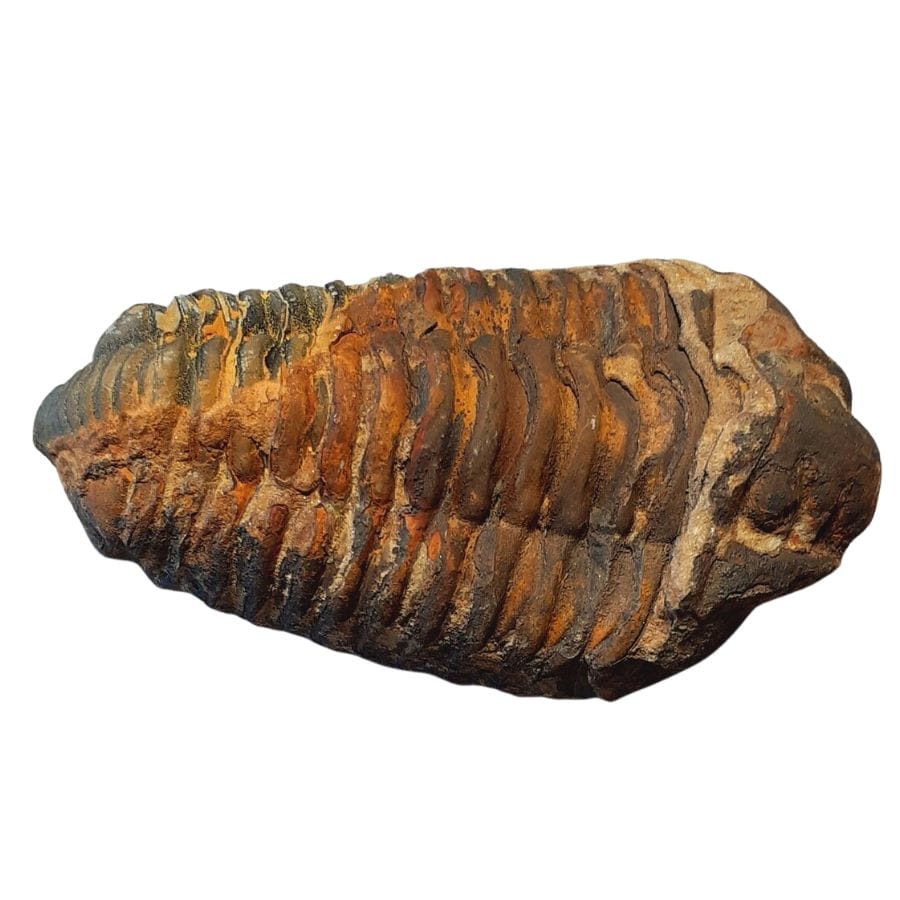
Many folks are eager to learn more about the different fossils that can be found in Iowa. From understanding what types of creatures left behind these traces to knowing how to identify them, there’s a lot to explore.
Can you find megalodon teeth or shark teeth in Iowa?
When it comes to fossil hunting in Iowa, you’re more likely to find remains from sea creatures that lived in the shallow seas that once covered the area.
Though Iowa was underwater during times when megalodons and many other sharks existed, Iowa’s waters were far from the oceanic environments where megalodons lived. So, finding megalodon teeth in Iowa would be extremely unlikely.
It’s possible to find other shark teeth, but they’d be from smaller, freshwater species.
Is it illegal to collect fossils in Iowa?
Collecting Iowa fossils can be a thrilling experience, but it’s essential to know the rules. While many public lands allow for personal collecting, there are restrictions.
Some sites, especially those of significant scientific interest, might have regulations against removing anything. State parks, preserves, and some other areas might prohibit collection entirely.
It’s always important to respect these rules to help preserve the state’s rich geological heritage for future generations.
If you’re unsure about where you can and cannot collect, it’s a good idea to check with the Iowa Department of Natural Resources. They offer guidance and can provide the most up-to-date information on rules and locations.
Can you find dinosaur bones in Iowa?
Though finding dinosaur remains is always an exciting prospect for fossil enthusiasts, discovering dinosaur bones in Iowa is unlikely. Iowa was mostly covered by shallow seas during the time dinosaurs roamed the earth.
How do you identify the fossils that you find?
Identifying fossils is like playing detective with the history of our planet! When you find a fossil, look closely at its shape, size, and any patterns it might have.
Many fossils of Iowa can be matched to pictures in fossil guidebooks or reliable online sources.
The environment where you found the fossil can also give clues. For example, if you’re in an area that was once underwater, you might find shells or marine plants.
Using a magnifying glass can help see tiny details that might not be visible to the naked eye.
Also, joining a local rock and fossil club can be a big help. Fellow members often have lots of experience and can give you tips or even help identify tricky finds.
Our Favorite Places To Buy Fossils In Iowa

Whether you’re starting your collection or adding to it, there are fantastic spots in Iowa to buy fossils. Here are some of the best shops in the state:
- Hound Dog Rock Shop – 115 Lombard St, Clarence, IA 52216
- Little Rock and Gem Shop – 3002 N Brady St, Davenport, IA 52803
- Whimsical Wonders – 2323 N 2nd St, Clinton, IA 52732
- Honey Creek Gems – 1228 Washington St, Davenport, IA 52804
- The Noble Stone – A World of Treasures – 4510 220th Trail, Amana, IA 52203

